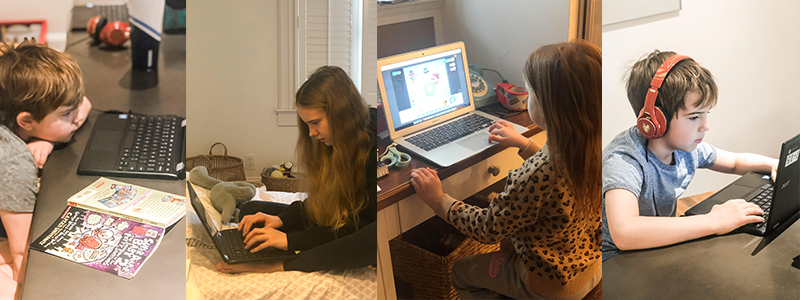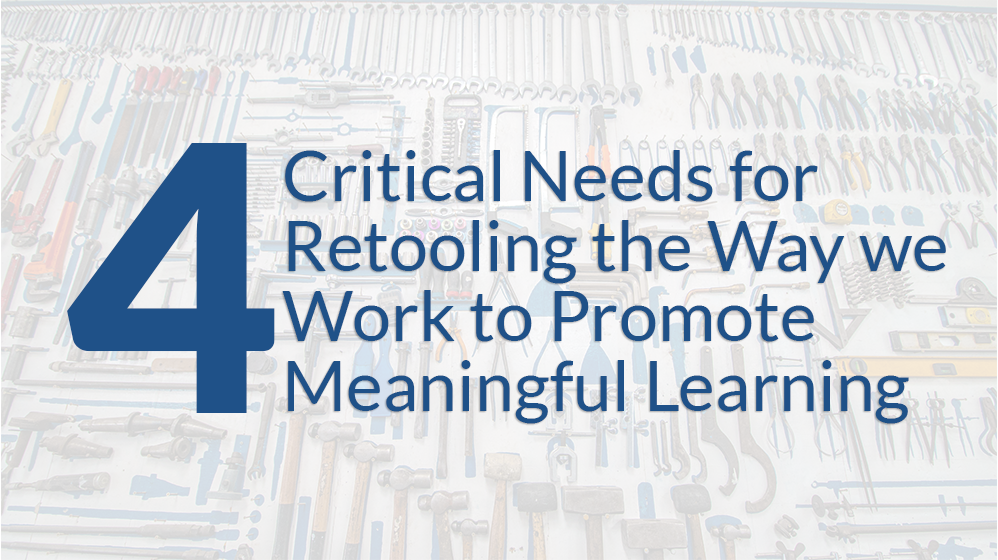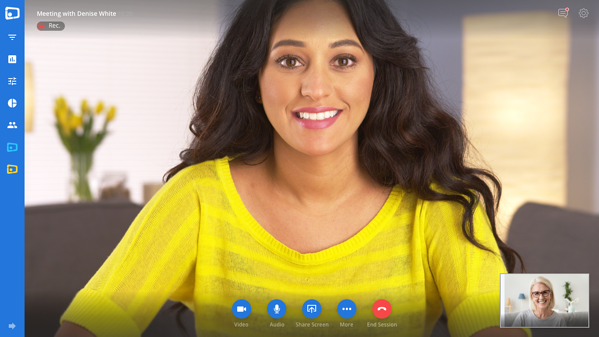Across the nation we are seeing remarkable feats by teachers, students, parents and school administrators as we rethink what school looks like. In my own experience as a parent of six kids that range from a kindergarten student to a sophomore in high school, I’ve witnessed first-hand the transition. The “new normal” takes on some version of the following:
- Weekly virtual check-ins with classmates and teachers to stay connected.
- Daily calendars of activities to be completed at home with suggested amounts of time for core content and enrichment.
- Assignments to complete and turn in via google classroom.
- Lists of links to other learning sites to support content.
- And generally, about 3-4 hours of free time every day after the above list has been completed.
As a parent in this situation I watch my children and wonder how we can do better. All efforts in the e-learning scenario painted above focus on simple completion of something. Whether that be conducting the weekly virtual class check in or simply completing the 30 minutes of reading required in the weekly schedule, completion is the goal. But we all know that simply completing something doesn’t automatically translate to meaningful teaching and learning.

Then I put my educator hat on and realize we have asked teachers and schools to launch an entirely new model of education in a matter of weeks! We should be praising the superhuman efforts required to pivot so quickly. Simultaneously, we should recognize that there is a real opportunity here for the type of quick learning and adaptation that makes any endeavor successful whether that be in education, business or parenting. How do we capture the lessons we are learning, process them, and apply them to our daily and weekly re-tooling at the teacher and system level? How do we create the conditions to make this happen? What structures and tools can be used to support this endeavor within the constraints of the “new normal” we are all living in? And how do we do all of this while facing budget cuts the likes of which we haven’t seen in education for over a decade.
In our work we have been active participants with districts across the country to keep the year moving and triage some level of learning. There are four needs that have emerged as trends in what teachers, principals and superintendents are telling us. The umbrella for all of these trends is keeping communication and collaboration simple and all in one place with minimal cost. Below are the four needs that situate themselves under that umbrella.
Need 1: Provide feedback and support on remote learning.
As teachers get more comfortable delivering virtual instruction, it is becoming critically important to provide them with feedback. Just as with live teaching, when teachers are delivering a virtual lesson there’s so much to manage. The teacher is focusing on content, student engagement, and navigating/troubleshooting the technology. That’s a lot to focus on! An objective eye can help highlight bright spots in virtual lessons and draw attention to areas for growth. We are working with teachers who are taking screencasts of their virtual lessons, uploading them to a video observation platform called ADVANCEfeedback and asking for a coach to provide feedback. The coach provides feedback asynchronously and then schedules a coaching conversation with the teacher in ADVANCElive—which is part of the same platform and allows educators to collaborate virtually and even attend trainings and other meetings all in one place.
Need 2: Make it easier to talk to someone who can relate to the power and pain of virtual instruction.
In our support of teachers over the last 2 months we have heard over and over again how important it is to provide an outlet for peers to talk to each other. Collaboration is not just a professional necessity, it’s a human necessity. Distance learning can feel isolating for students and teachers. We need to find ways for teachers to connect with each other, collaborate, collectively solve problems in this new paradigm of teaching and just stay emotionally connected with each other. We are seeing reports of how critical it is for adults to take care of themselves and each other from a social/emotional perspective during this period of social distancing. ADVANCElive provides the avenue for teachers to get that support from colleagues, coaches and principals.
Many of our partners are using ADANCElive to schedule conversations with peers, coaches, or principals. We are even seeing schools conduct virtual PLCs in ADVANCElive which also records the meeting so that participants who are not able to attend can do so virtually when they are available. This is such a critical component of the “new normal” we are creating for ourselves. One superintendent recently told me that time used to be the constant and learning was variable. He sees social distancing as an opportunity to make learning more constant while time is variable. ADVANCElive facilitates that exact new paradigm by providing the flexibility for adults to learn from each other in trainings, meetings, and professional learning communities without all having to be in the same room or unsecured virtual meeting at the same time.
Need 3: Reduce the number of technology platforms we expect adults to use.
We hear over and over again that one of the biggest hurdles to teaching, coaching, managing, and just plain working virtually is the number of platforms that an individual has to manage. This was already a problem in school districts. Anyone that has ever been part of a conversation in which “single sign-on” was mentioned can relate. But now the problem has been exacerbated through the total virtual environment in which we are operating. Are we using Google Hangout, Zoom or Microsoft Teams for this meeting? Who is taking notes? How are we sharing next steps with colleagues who are not attending? These are all the simple questions that emerge in just one meeting. Imagine the number of questions that emerge when trying to re-design an entire organization to function virtually!
We’ve experienced these pain points in our own organization and in working with our partner schools and districts. So we’ve tried to solve for some of these issues by creating a space in which training, coaching, meetings, and collaboration all happen in one platform. We think there’s some power to this concept in addressing some of the tensions I just described, but we also believe there’s power in just making scheduling each of these events easier and connected in one place. Ultimately, we are trying to remove as many logistical barriers to collaboration as possible to free up people’s time and energy to share great ideas, solve bigger problems related to teaching and learning and be empowered to evolve as we all make sense of how to be our best in a new paradigm.
Need 4: Reduce the cost of a coaching program.
The final pain point we are trying to address is that of cost. There’s not a school or district leader in the country that’s not worried about what their budget will be next year and the year after that as a result of COVID-19. We’ve heard and read estimates from school budget experts and superintendents across the country that range from 10%-20% reductions to their overall budget for the next two years. Maintaining a positive culture in which professionals are getting the feedback they need and deserve in the midst of such draconian budget cuts is difficult, to say the least. We’ve thought long and hard about how we can address such an issue.
Schools and districts will need a range of options to choose from when it comes to continuing support for teachers. This range must accommodate different levels of budget constraints, ongoing uncertainty related to budget, and the overall capacity of a school or district to effectively manage coaching initiatives and supports. Below are some options to consider.
- Expand the reach of coaches by employing technology. We have worked with several schools and districts who continue to be concerned with the amount of support teachers will need during the current crisis and beyond yet simultaneously may not have budget resources to expand the level of support. ADVANCEfeedback can increase the number of teachers that one coach can support by 50%-60% by providing the flexibility for the teacher and coach on when they deliver and receive the support, facilitating targeted support for a portion of a lesson rather than an entire class period, and removing the barriers associated with scheduling live coaching sessions. Each of these functions allow a coach to increase the number of teachers they support without increasing the number of hours they work.
- Reduce the cost of professional development by at least 50%. ADVANCElive gives schools and districts the capacity to deliver professional development by increasing the number of teachers who can receive professional development at one time and providing options for the professional development to be delivered multiple times without additional cost. We are currently working with schools, districts and state departments of education to deliver professional development in some cases across entire states for the cost of a typical one day in-person session.
- Double collaboration time and efficiency. As educators are working to revamp their curriculum, share successes and solve problems that naturally occur during virtual instruction they are seeking ways to expand their collaboration as small learning communities. District office curriculum teams, school leader academies and teacher PLCs have found ADVANCElive a helpful tool to increase the amount of interaction they can do during social distancing. These teams schedule their meeting times in ADVANCElive, present problems of practice to each other in ADVANCElive, pull sample videos of themselves teaching or sample curricular resources right from the resource library for discussion, and record the collaborative problem solving to push out to team members who cannot attend, all within a secure system. The ability to perform all of these functions seamlessly in one system translates to increased efficiency and simply more collaboration than was occurring in-person.
Let’s take this pandemic and turn it into an opportunity to improve. If you’re up for the challenge, feel free to contact me at [email protected] to learn more about how we can help you restructure your coaching program, help it run more efficiently, and save your budget dollars. And, the Insight ADVANCE team is willing to offer ADVANCEfeedback and ADVANCElive for free for the rest of year as a way to build capacity without adding additional cost during uncertain times.
Best of luck, stay healthy and safe, and keep learning. Our ingenuity is our best asset.
With ADVANCEfeedback®, teachers, coaches and school leaders can connect on a deeper level using video and data as a common piece of evidence. Now featuring both asynchronous and synchronous video with ADVANCElive, districts and schools can increase the frequency of coaching, save time and money, and drive teacher growth all in one platform.







